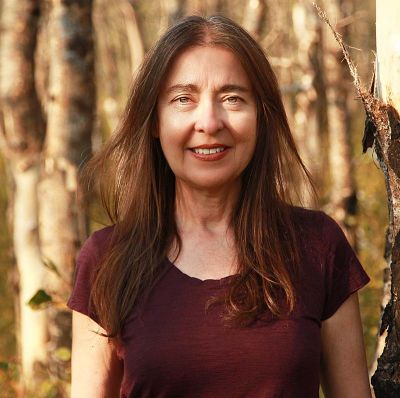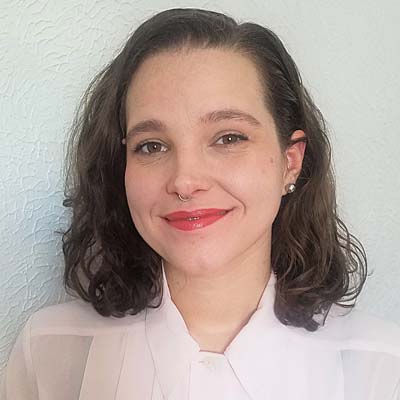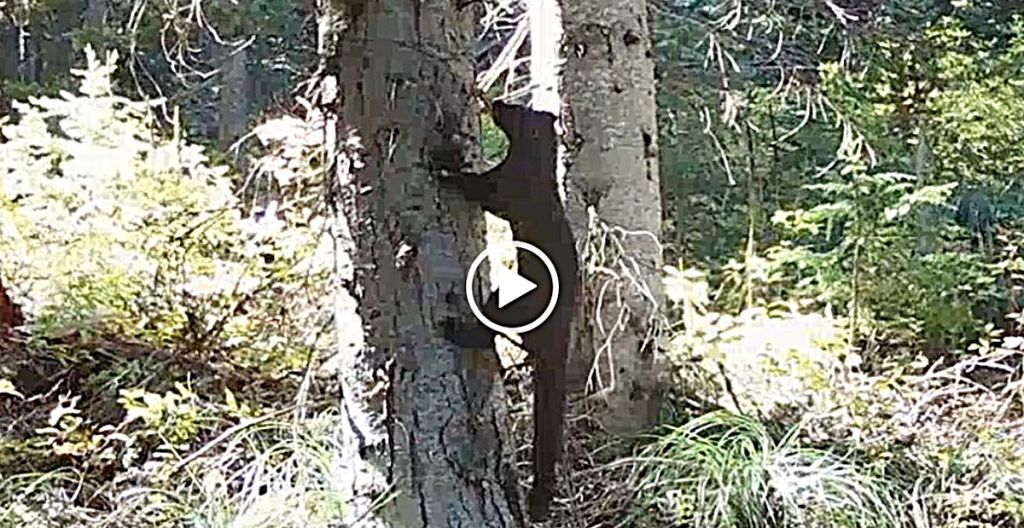The Forest Service is becoming open to integrating Indigenous land management practices into its own work

Joining forces: Using western science and Indigenous knowledge, Ashley Russell (left) and Tessa Chesonis survey an Oregon forest. Russell is the interim director of culture and natural resources for the Confederated Tribes of the Coos, Lower Umpqua and Siuslaw Indians. Chesonis is an OSU graduate student. Photo: OSU
By Kendra Chamberlain. April 24, 2024. Land management in the United States will need a paradigm shift to survive climate change and a legacy of mismanagement.
A team of scholars and practitioners across North America are calling for a “two-eyed seeing” approach to land management. This means genuine collaboration between Indigenous and western governments.
The policy recommendations were outlined in a report released April 10. The report was co-led by Oregon State University professors Cristina Eisenberg and Michael Paul Nelson; and fire ecologists Susan Prichard of the University of Washington and Paul Hessburg of the U.S. Forest Service’s Pacific Northwest Research Station.
Forest management in the United States is at a crucial juncture, and agencies such as the Forest Service are more open to integrating Indigenous knowledge and practices of land stewardship.
“We are very interested in understanding how Indigenous Knowledge can be used in combination with western science to improve our management of all forest conditions including old growth,” Forest Service Deputy Chief Chris French said in a press release. “This report is a big step in improving our understanding of how to do that.”
In the Pacific Northwest, two-eyed seeing in part addresses misconceptions about fire and conservation.
For starters, it requires forests to be treated as dynamic and not static landscapes—this includes old-growth forests and protected areas.
“Change is constant in nature,” says OSU’s Eisenberg (Rarámuri and Western Apache), Oregon State University’s associate dean for Inclusive Excellence and Maybelle Clark Macdonald Director of Tribal Initiatives in Natural Resources. “Change is a key element of Indigenous knowledge, acknowledging it. And then what comes with that change is we need to pay attention to what the natural world is telling us.”
Eisenberg says Indigenous practices emphasize place-based land management strategies, where decisions are reflective of what each specific area needs.
“We steward the forest the way we would steward a family, taking care of everybody, our elders, our youth, making sure everybody has what they need and is respected,” says Eisenberg. “Each one has its own needs, the way each family has its own needs. And you learn from the forest and the forest tells you what it needs.”
Trail blazers
Many forests in the Pacific Northwest are actually “maladapted” ecosystems that have emerged under a 100-plus year regime of fire suppression, according to the report.
They’re denser than they should be, and need to be thinned out in order to restore them to health.

Cristina Eisenberg. Photo: OSU
Historically, fire has played an important role in forest ecosystems of the Pacific Northwest.
The report notes that both natural and human-ignited fire “is a fundamental process across nearly all ecocultural systems of this region.”
Indigenous ecocultural fire practices will need to be reintroduced—albeit carefully—to help these ecosystems regain resilience in the face of climate change.
The role of fire varies significantly across ecosystems and Indigenous cultural practices, and needs to be rooted in nuanced, place-based knowledge of specific landscapes.
This idea runs contrary to current federal forest policies around prescribed burning, which use more of a one-size-fits-all approach.
“Applying a concept that is universally measured the same way across all forests in the United States, doesn’t work because each forest is different,” says Eisenberg. “The native way is we burned ridges sometimes, sometimes we would burn over streams.
“It depended and the elders would say, ‘Well, gee, we think you should think about this area. I think it needs some tending with fire.’ And so it was very place-based and situation-based.”
Experts from four Tribes, 10 universities, the Forest Service and a handful of environmental firms contributed to the report.











Excellent. I wish I could learn more about indigenous practices and land management. Recently, I’ve grown more aware how we new to develop new ways of seeing–this article gives us a glimpse of new possibilities. I am going to read the report now..